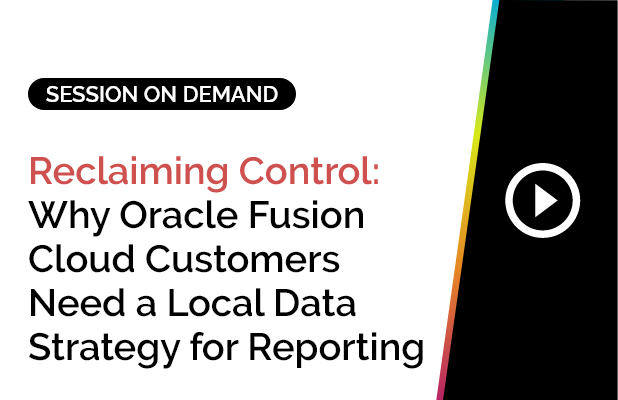Diversity in the workplace is thriving within the HR world now more than ever. That said, all the businesses are looking to adapt to diverse teams since it comes with a plethora of amazing benefits.
Before we get into the benefits of diversity, it is essential to comprehend what diversity in the workplace is. When an organization proactively runs a workplace, they include individuals that are unique, individuals who come from distinct backgrounds and have different caste, religion, gender, age, sexual orientation, locations, ethnicity, beliefs, and education. This kind of inclusion in the workplace is what makes it diverse. With the rising significance of diversity in the workplace, it is crucial to understand its effect. Whether it is the marketing sector, sales, finance, or HR, diversity has a significant influence on the workplace.
Advantages Of Diversity in the Workplace [12 Benefits]
Diversity in the workplace is a business imperative. The advantages of diversity in the workplace go beyond compliance. They foster innovation, boost employee morale, and enhance a company’s reputation. Organizations that prioritize cultural diversity in the workplace create an environment where different perspectives, skills, and experiences come together to drive growth.
But what exactly is diversity in the workplace? It’s more than just hiring people from varied backgrounds. It’s about fostering inclusion where differences in age, gender, ethnicity, religion, and education are valued and celebrated, not feared. Understanding the benefits of managing diversity in the workplace—from better decision-making to increased profitability—can help businesses unlock their full potential.
In this blog, we explore the benefits of diversity in the workplace, why it matters, and how companies can incorporate it to create an inclusive and thriving work culture.
What is Diversity in the Workplace?
Diversity in the workplace refers to the inclusion of individuals with varied characteristics and backgrounds, such as age, gender, ethnicity, religion, education, and cultural heritage, within an organization. It is about creating an environment where these differences are not only acknowledged but valued and leveraged to drive innovation, collaboration, and business success.
The importance of diversity in the workplace lies in its ability to foster a sense of belonging among employees, breaking down barriers to collaboration and enhancing mutual respect. A diverse workplace thrives on the unique perspectives and experiences that each employee brings to the table, helping organizations address challenges creatively and adapt to a globalized world.
When organizations embrace cultural diversity in the workplace, they build a stronger foundation for innovation and inclusion. Diverse teams bring varied viewpoints that can enhance decision-making and improve the quality of outcomes. This isn’t just an HR trend. It’s a business strategy with proven advantages of diversity in the workplace, such as improved employee satisfaction, better customer targeting, and higher profitability.
In short, diversity in the workplace is a driver of growth, inclusivity, and resilience, making it essential for organizations aiming to succeed in modern workplaces.
Why Diversity and Inclusion Matter in the Modern Workforce?
Understanding the importance of diversity in the workplace is key to fostering a productive and inclusive environment that supports growth and collaboration. Organizations with inclusive cultures benefit from enhanced employee engagement, improved problem-solving capabilities, and stronger financial performance. A diverse workforce brings together unique perspectives, cultural experiences, and skill sets, enabling teams to tackle challenges with creativity and innovation.
Embracing cultural diversity in the workplace promotes a sense of belonging, which directly impacts employee retention and satisfaction. Employees who feel valued and respected are more likely to stay committed to their organizations, reducing turnover and boosting productivity. For businesses, this translates into tangible benefits of managing diversity in the workplace, such as reduced recruitment costs and a more stable, motivated workforce.
Diversity also plays a crucial role in building stronger relationships with customers and stakeholders. An inclusive organization is better equipped to understand and serve a broad range of demographics, gaining a competitive edge in global markets.
In the modern workforce, prioritizing diversity and inclusion is not optional. It is essential for long-term growth, innovation, and resilience. Organizations that recognize and act on this reality position themselves as leaders in their industries, reaping the benefits of diversity in the workplace while driving meaningful change.
12 Benefits of Diversity in the Workplace You Need to Know
1. Different Perspectives Yield Better Results
Since diversity in the workplace includes diverse employees with different genders, ages, cultural backgrounds, unique skills, and experiences, they are bound to have different perspectives. It is a booster point while making important business decisions, or while planning, managing, and implementing a business plan.
2. Unique Viewpoints
One of the benefits of diversity in the workplace is that diverse viewpoints fuel creativity and innovation in every aspect of the business. The infinite differences of the individuals in a team come from different experiences and life histories. Their viewpoints are unique. Their differences make them unique as a team. A diverse group is a brewing cup of creativity, exposure, new ideas, new thoughts, and new business outcomes. Incorporating diverse viewpoints in a project can lead to a wider range of creative solutions. Study by Harvard Business Review discovered that teams with diverse perspectives make decisions faster and more efficiently.
3. New and Better Innovations
Companies with above-average diversity in their management teams reported 19 percentage points higher innovation revenue than those with below-average leadership diversity, with 45% of total revenue versus just 26%. Today’s tight competitive markets require constant innovation. A diverse workplace has a higher chance of innovation. This comes from combining different ideas and perspectives and getting a whole different idea or innovation altogether.
4. Creative Solutions
Cognitively similar people lack problem-solving skills when compared to diverse people within a team. A diverse group can contribute to a distinct solution, at the right time or even sooner.
5. Multiple Solutions
Including diversity in the workplace has benefits in better decision making. As compared to individuals who make business decisions, a diverse team can make better decisions and solve multiple issues. They can provide better solutions and benefit the workplace from their varied qualities.
6. Increased Profits
McKinsey has reported that firms with diverse executive teams are diverse are more likely to generate greater profits than companies that lack diversity within executive teams. With diversity come varied interests, opinions, arguments, different kinds of performances, and diverse feedback. It results in your company making informed decisions, and that leads to better and increased profits.
7. Increased Employee Engagement
Research has found that the combination of diversity and inclusion within a workplace leads to the highest levels of employee engagement – 101%. An inclusive environment is one of the greatest benefits of diversity in the workplace, leading to better employee retention and satisfaction. When different kinds of people come together, each one of them gets a chance to grow more from what they see or like from other people. When employees feel like they can mingle, contact well, be entertained, and included, they perform better, and it results in an increased employee engagement rate. Recognizing why employee engagement is a big deal helps organizations foster an engaging and productive workplace culture.
8. Boost Morale
When diversity is inclusive in the workplace, employees feel valued and accepted. Employees always look to stay with the company longer when they are happier, and this leads to a reduced employee turnover overall. A 2018 study of the IT sector in the US by Deloitte revealed that companies that lead in diversity and inclusion report higher employee retention and lower employee turnover
9. Brand Value
Workplace diversity widely influences a company’s reputation. If the workplace has different people, it creates a different perspective of the company, with new images, exciting people, an inclusive environment. It all combines to showcase an excellent company reputation. This, in turn, increases brand value, adds new customers, partners, and helps companies venture into new markets. A diverse workplace highlights cultural diversity in the workplace, creating an inclusive brand that appeals to global audiences.
10. Attract New Talent
Organizations that embrace cultural diversity in the workplace naturally attract a broader and more talented workforce. New hires always look for companies that are fun and enjoyable to work with; this is possible only with a diverse workplace. If the employee base is diverse, with a great talent pool, it naturally attracts more varied people.
11. Remove Bias
Diversity in the workplace helps eliminate societal biases, leading to a significant decrease in both gender and pay disparities. Employees learn from their strengths and weaknesses and work together more effectively as a team. Addressing unconscious bias in hiring is a crucial step in fostering a fair and inclusive environment, ensuring that all individuals have equal opportunities.
12. Boost Productivity
Organizations that build diversity into their DNA have employees capable of working collaboratively, leading to 32% higher productivity. Making diversity a priority in the workplace maximizes productivity; there is no negative atmosphere that results in burnouts. Unique ideas and passion bring excellent outcomes, and it increases the productivity of your team.
Types of Diversity in the Workplace
Understanding the benefits of managing diversity in the workplace helps businesses leverage their employees’ unique perspectives and skills. But there’s no single type of diversity that can make organizations truly inclusive.
Let’s understand the various types of diversity in the workplace:
1. Cultural Diversity
Refers to differences in cultural backgrounds, including nationality, ethnicity, language, and traditions. Embracing cultural diversity in the workplace fosters innovation by combining varied perspectives and helps organizations connect with a global customer base.
2. Gender Diversity
A balanced representation of all genders ensures equitable opportunities and viewpoints in decision-making processes. The benefits of diversity in the workplace are amplified when men, women, and non-binary individuals collaborate effectively.
3. Age Diversity
Including employees from various age groups promotes a mix of experience, innovation, and adaptability. Younger employees bring fresh ideas, while older workers contribute with their expertise and leadership.
4. Educational Diversity
Teams with diverse educational backgrounds can approach problems from different angles, leading to creative solutions. This type of diversity ensures a blend of academic and practical knowledge in the workplace.
5. Disability Diversity
Including individuals with physical or cognitive disabilities creates a more inclusive environment and allows organizations to tap into untapped talent pools while promoting equity and respect.
6. Socioeconomic Diversity
Employees from varied economic backgrounds bring unique life experiences, adding depth to workplace perspectives and decision-making processes.
Each type of diversity enriches the workplace, creating a dynamic environment where employees can thrive, and organizations can reap the advantages of diversity in the workplace.
Incorporate diversity in the workplace
Companies that understand the benefits of managing diversity in the workplace are better positioned to create sustainable growth and innovation. Companies struggle to break down their biases and incorporate diversity in the workplace, whether it is hiring, talent acquisition, or choosing a candidate for a promotion. They trust age-old practices over intuition or new ideas and perspectives.
Let’s find out how to incorporate diversity in the workplace:
1. Build a Cultural Bond
Boost cultural competency by improving communication and eliminating confusion and misunderstanding. Everyone must interact professionally with a distinct variety of people. Promoting more cross-cultural communication is a great way to be open to new approaches, new travel, opportunities, making new friends, etc.
2. Value Every Employee
Have a workplace where new ideas and thoughts are valued and not belittled. It is an invaluable asset to have a unique pool of talent instead of having the same qualities in everyone. Proactively look at new talent with new ideas and perspectives that will foster a productive business environment.
3. Respect All Employees
Despite a diverse group of individuals in a team, it is imperative to treat everyone in the same way. It promotes cultural awareness, and employees appreciate the care you take about their sensitivities and respect them. Treating your employees well is a respectful way of maintaining a diverse workplace, and new hires feel encouraged and welcomed in a pleasant atmosphere.
4. Be Inclusive
Contribute to diversity by following cultural and geographical traditions and customs. Participate in inclusive activities and share their interests with great food, celebrations, music, holidays, etc.
Workforce Diversity Challenges
1. Unconscious Bias
One of the major challenges in achieving diversity is unconscious bias, where hiring managers or team leaders unknowingly favor candidates or colleagues similar to themselves. This can limit opportunities for underrepresented groups, undermining the importance of diversity in the workplace and preventing equitable hiring practices.
2. Resistance to Change
Employees and leadership may resist efforts to increase diversity, fearing disruption to established norms or practices. Addressing this resistance requires clear communication about the benefits of managing diversity in the workplace and its positive impact on organizational growth.
3. Communication Barriers
Cultural diversity in the workplace can lead to miscommunication or misunderstandings due to differences in language, expressions, or work styles. These barriers can hinder collaboration and create a fragmented work environment if not addressed effectively.
4. Lack of Leadership Commitment
Without buy-in from top leadership, diversity initiatives often fail to gain traction. Leaders must prioritize and actively support diversity goals to foster a truly inclusive workplace.
5. Limited Access to Data and Insights
Many organizations struggle to measure diversity or identify gaps due to a lack of robust data and analytics tools. Without actionable insights, it becomes difficult to evaluate the advantages of diversity in the workplace or address areas needing improvement. This highlights the need for comprehensive people analytics solutions, such as SplashBI for HR, to bridge this gap and drive diversity strategies forward.
Conclusion: Leveraging People Analytics to Maximize the Advantages of Diversity in the Workplace
Achieving and sustaining workplace diversity is not just a moral imperative but a strategic advantage. Organizations that embrace cultural diversity in the workplace reap significant benefits, including enhanced creativity, better decision-making, increased employee engagement, and improved business outcomes. However, addressing the challenges associated with diversity requires not only commitment but also actionable insights.
This is where SplashBI for HR can make a transformative impact. By leveraging advanced people analytics, SplashBI empowers organizations to gain clear visibility into diversity metrics, identify gaps, and make data-driven decisions. With SplashBI, you can:
- Analyze Workforce Diversity: Access detailed dashboards and reports to evaluate the current state of diversity across various dimensions, such as gender, ethnicity, age, and more.
- Identify Trends and Gaps: Spot patterns that may indicate areas needing improvement, such as underrepresentation or retention issues in specific groups.
- Enhance Decision-Making: Use data insights to design targeted initiatives that support inclusion and drive the benefits of managing diversity in the workplace.
- Track Progress: Monitor the success of diversity initiatives over time with real-time updates and dynamic reporting tools.
Organizations equipped with such tools are better positioned to overcome barriers, foster inclusion, and harness the importance of diversity in the workplace as a driver of innovation and growth.
Ready to take your diversity efforts to the next level?
Explore how SplashBI for HR can provide the insights you need to transform your workforce into a more inclusive, high-performing team.
Request a Demo of SplashBI for HR and discover how people analytics can help you unlock the full potential of your workforce.
Frequently Asked Questions
Equality and diversity in the workplace offer a range of advantages, including:
- Enhanced innovation: Diverse teams bring varied perspectives, leading to unique ideas and solutions.
- Improved decision-making: Different viewpoints and experiences enable better, well-rounded decisions.
- Increased employee engagement: Inclusive workplaces create a sense of belonging, boosting morale and productivity.
- Broader talent pool: Attracting and retaining top talent from diverse backgrounds enhances organizational strength.
- Improved business performance: Studies show companies with diverse teams are more likely to outperform their competitors financially.
Effectively managing and promoting cultural diversity in the workplace involves:
- Inclusive hiring practices: Use unbiased job descriptions and diverse interview panels to attract talent.
- Diversity training: Educate employees and leaders on the importance of diversity and inclusion.
- Leadership support: Ensure senior management is committed to driving diversity initiatives.
- Flexible work policies: Provide remote work options, flexible hours, and parental leave to support diverse needs.
- Leveraging data and insights: Use people analytics tools, like SplashBI, to track diversity metrics and measure progress.
- Creating safe spaces: Foster an environment where employees can share concerns without fear of retaliation.
- Celebrating diversity: Acknowledge cultural events and milestones to demonstrate inclusivity.
Integrating diversity metrics into core business intelligence reporting is crucial for companies to identify and address potential biases in recruitment, pay equity, and overall workforce representation. This strategic approach allows organizations to foster a more inclusive environment, which is directly linked to enhanced financial performance, reduced employee turnover, and increased innovation.
Workplace diversity enhances team performance and decision-making by bringing together varied perspectives, experiences, and problem-solving approaches. This cognitive diversity leads to more robust solutions and innovative outcomes.
Key Performance Indicators (KPIs) for evaluating diversity and inclusion initiatives include monitoring headcount by demographic, analyzing compensation across different employee groups, tracking key performers from diverse backgrounds, and assessing hiring trends for these groups. These metrics help identify biases in recruitment and inform strategies to foster a more inclusive work culture.
Business intelligence (BI) tools can significantly enhance Diversity, Equity, and Inclusion (DEI) initiatives by providing data-driven insights to track progress, identify disparities, and measure the impact of DEI strategies. These tools enable organizations to move beyond anecdotal evidence and make informed decisions based on measurable outcomes.


![Advantages of Diversity in the Workplace [12 Benefits] 2 People Analytics](https://b1005447.smushcdn.com/1005447/wp-content/uploads/2021/06/People-Analytics-scaled.jpg?lossy=0&strip=1&webp=1)
![Advantages of Diversity in the Workplace [12 Benefits] 3 Advantages of Diversity in the Workplace [12 Benefits] 1](https://b1005447.smushcdn.com/1005447/wp-content/uploads/2020/03/People-analytics-02-2048x750-1-1024x375.jpg?lossy=0&strip=1&webp=1)











